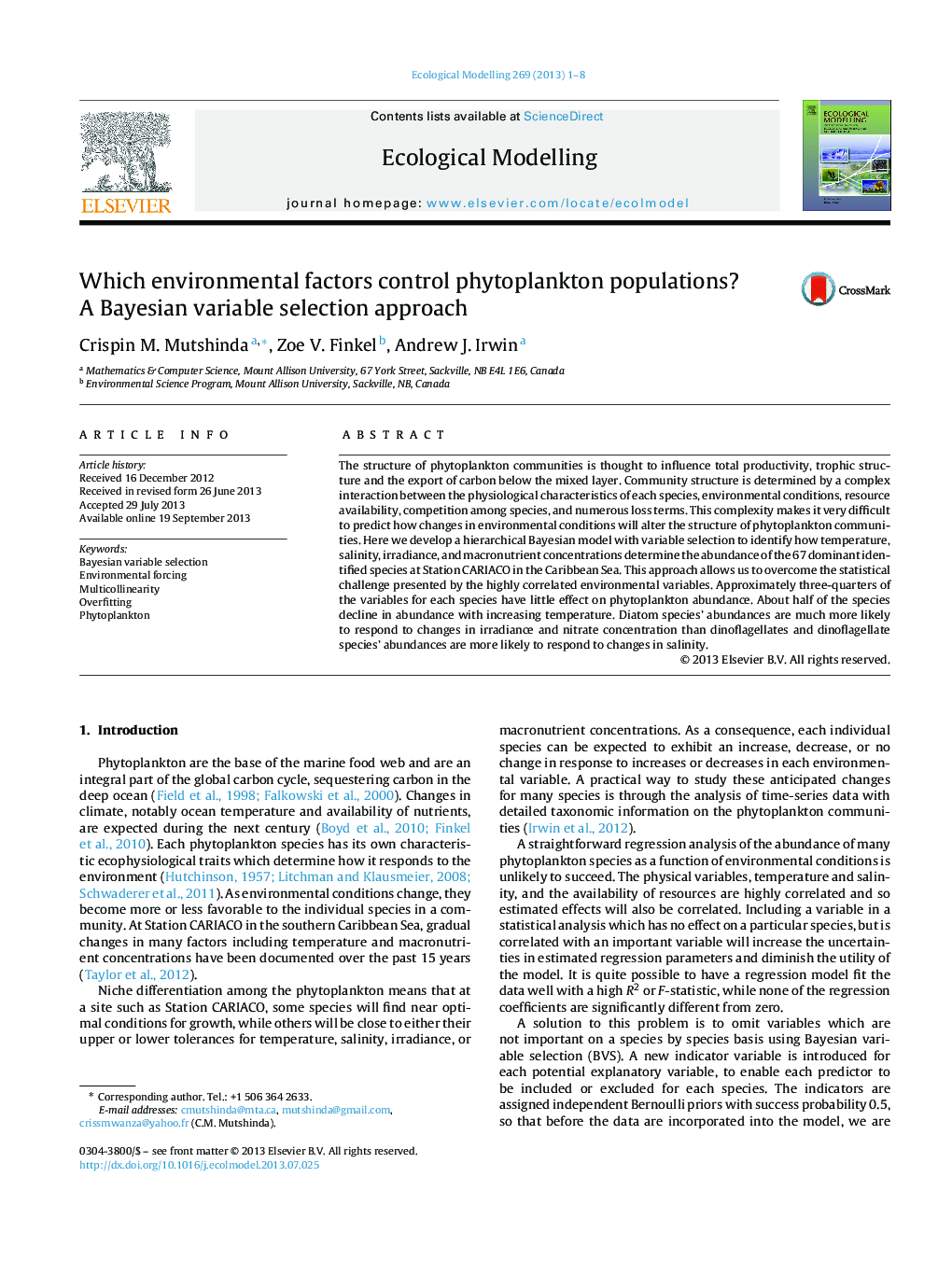| Article ID | Journal | Published Year | Pages | File Type |
|---|---|---|---|---|
| 4376038 | Ecological Modelling | 2013 | 8 Pages |
•Bayesian variable selection identifies abiotic factors of phytoplankton abundances.•Abundances of individual species are driven by different combinations of factors.•However, the association patterns are more similar within functional groups.•Statistical significance is not necessarily an indication of variable importance.
The structure of phytoplankton communities is thought to influence total productivity, trophic structure and the export of carbon below the mixed layer. Community structure is determined by a complex interaction between the physiological characteristics of each species, environmental conditions, resource availability, competition among species, and numerous loss terms. This complexity makes it very difficult to predict how changes in environmental conditions will alter the structure of phytoplankton communities. Here we develop a hierarchical Bayesian model with variable selection to identify how temperature, salinity, irradiance, and macronutrient concentrations determine the abundance of the 67 dominant identified species at Station CARIACO in the Caribbean Sea. This approach allows us to overcome the statistical challenge presented by the highly correlated environmental variables. Approximately three-quarters of the variables for each species have little effect on phytoplankton abundance. About half of the species decline in abundance with increasing temperature. Diatom species’ abundances are much more likely to respond to changes in irradiance and nitrate concentration than dinoflagellates and dinoflagellate species’ abundances are more likely to respond to changes in salinity.
